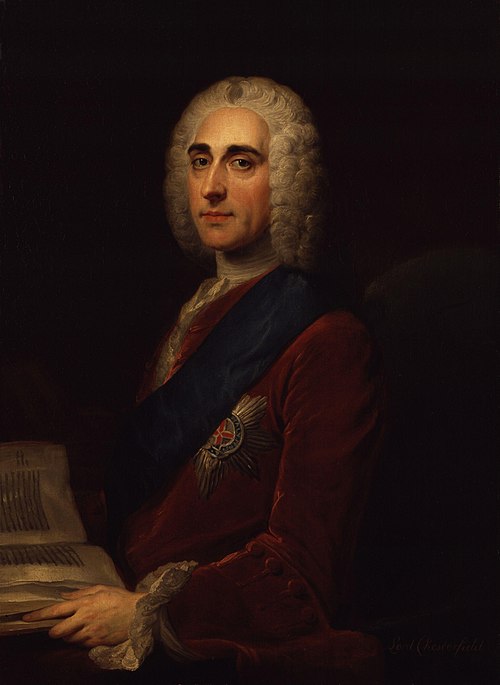Levee (ceremony)
Videos
Page
The levee was traditionally a daily moment of intimacy and accessibility to a monarch or leader, as he got up in the morning. It started out as a royal custom, but in British America it came to refer to a reception by the sovereign's representative, which continues to be a tradition in Canada with the New Year's levee; in the United States a similar gathering was held by several presidents.

Charles Wild (1816) St James's Palace, Queen's Levee Room

The second scene of William Hogarth's A Rake's Progress (1732-33) showing the wealthy Tom at his morning levée in London, attended by musicians and other hangers-on all dressed in expensive costumes. Surrounding Tom from left to right: a music master at a harpsichord, who was supposed to represent George Frideric Handel; a fencing master; a quarterstaff instructor; a dancing master with a violin; a landscape gardener Charles Bridgeman; an ex-soldier offering to be a bodyguard; a bugler of a

Le Lever, engraving by Louis Romanet (1742–1810), after Sigmund Freudenberg (1745-1801)
Etiquette
Videos
Page
Etiquette is the set of norms of personal behaviour in polite society, usually occurring in the form of an ethical code of the expected and accepted social behaviours that accord with the conventions and norms observed and practised by a society, a social class, or a social group. In modern English usage, the French word étiquette dates from the year 1750.

In Company Shocked at a Lady Getting up to Ring the Bell (1805) James Gillray caricatured "A widow and her suitors, who seem to have forgotten their manners in the intensity of their admiration."

At the Palace of Versailles, King Louis XIV used complicated étiquette to manage and control his courtiers and their politicking.

In the 18th century, Philip Stanhope, the 4th Earl of Chesterfield, first used the word etiquette to mean "the conventional rules of personal behaviour in polite society." (William Hoare)

In High-Change in Bond Street, – ou – la Politesse du Grande Monde (1796), James Gillray caricatured the lack of etiquette in a group of men who are depicted leering at women and crowding them off the sidewalk.